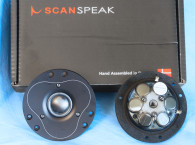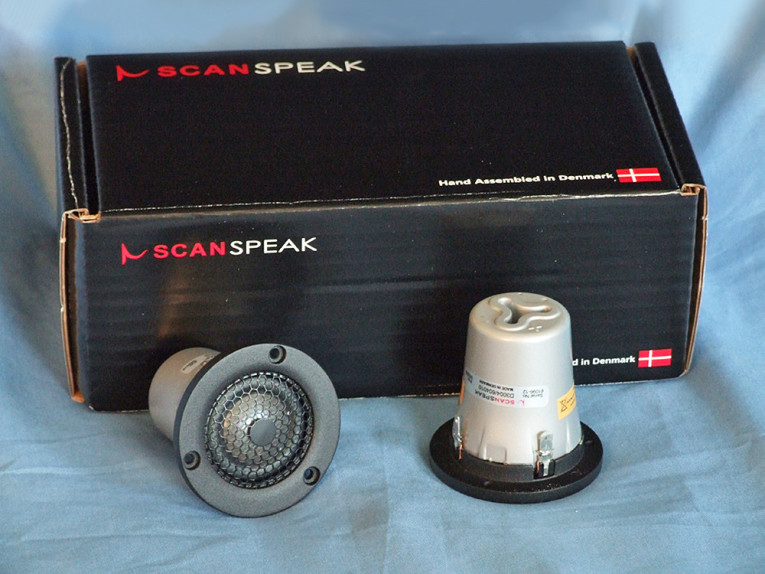
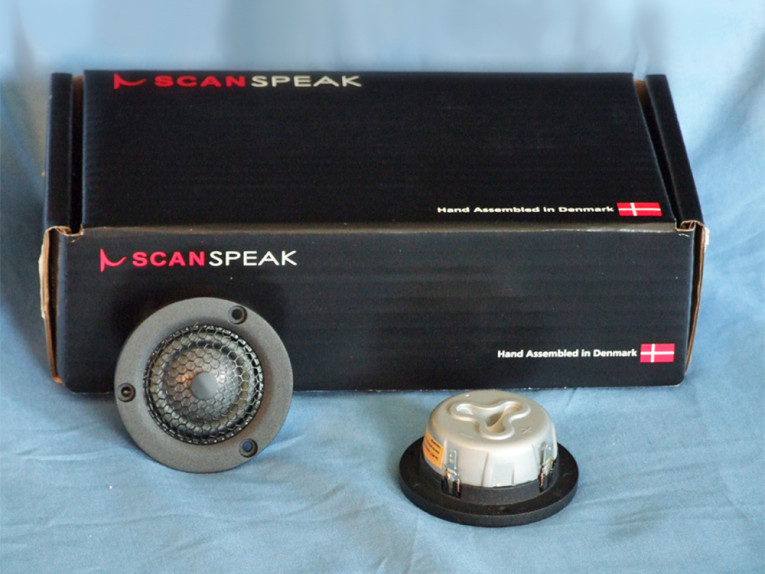

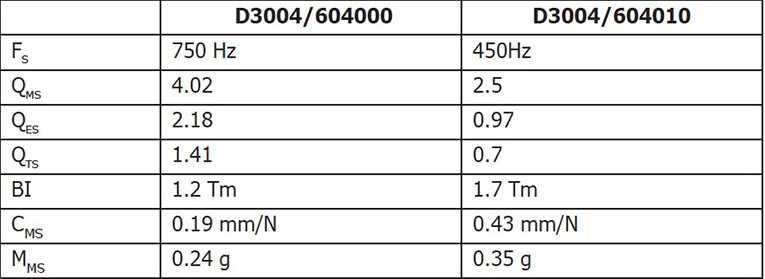
Both tweeters use a Materion 26-mm 99% pure beryllium dome, an underhung two-layer copper wound voice coil with 0.2 mm XMAX, a neodymium ring magnet in conjunction with Scan-Speak’s patented symmetrical driver SD-2 motor system (the SD-2 includes copper shorting rings), a non-resonant aluminum rear cavity, a wide coated cloth surround, and a sonically transparent metal protective grill with a 9-mm diameter diffuser built into the structure. The protective grill keeps the dome from being damaged and is a necessary safety precaution when using beryllium. While beryllium is safe in its molded form, if shattered, it’s a fairly nasty contaminate that also necessitates careful disposal at the end of its product cycle. For more information on beryllium, visit this link from Materion: https://materion.com/businesses/electrofusion.
I began testing the new Scan-Speak beryllium tweeters, the D3004/604000 and the D3004/604010, by generating a stepped sine wave impedance plot using the LinearX LMS analyzer. Figure 1 shows the results of the LMS 300-point impedance sine wave sweep for both tweeters. The resonance of the D3004/604010 is 444 Hz, compared to the D3004/604000 at 763 Hz. Minimum impedance for the D3004/604010 is 2.98 Ω at 2.07 kHz, with a 2.79 Ω DCR. The D3004/604000 had a minimum impedance of 2.96 Ω at 1.99 kHz and a 2.87 Ω DCR. Table 1 shows a more detailed comparison of the resonance of these two tweeters, the factory published Thiele-Small (T-S) parameter data.
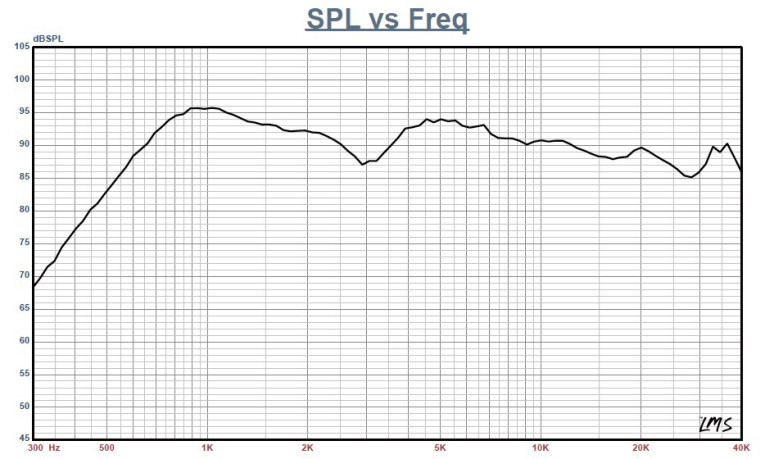

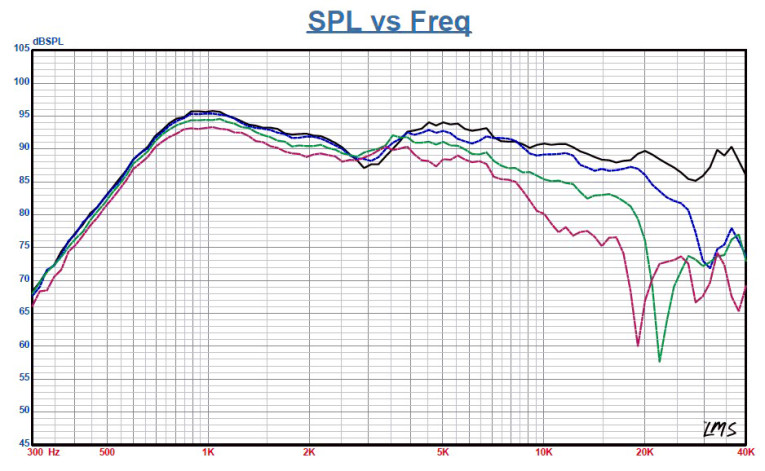

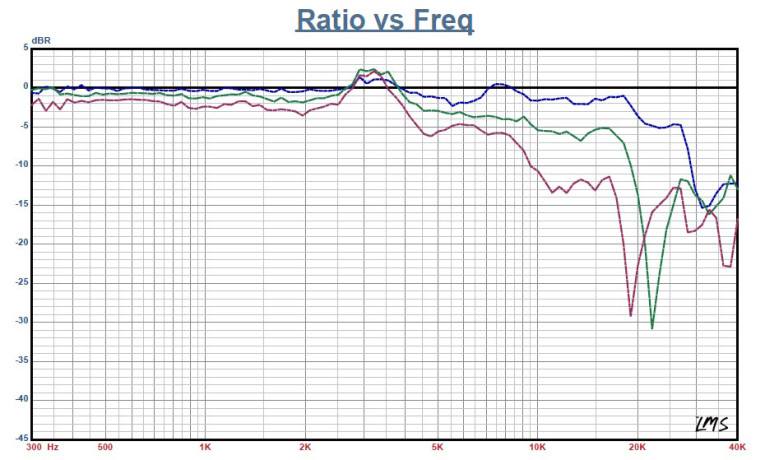
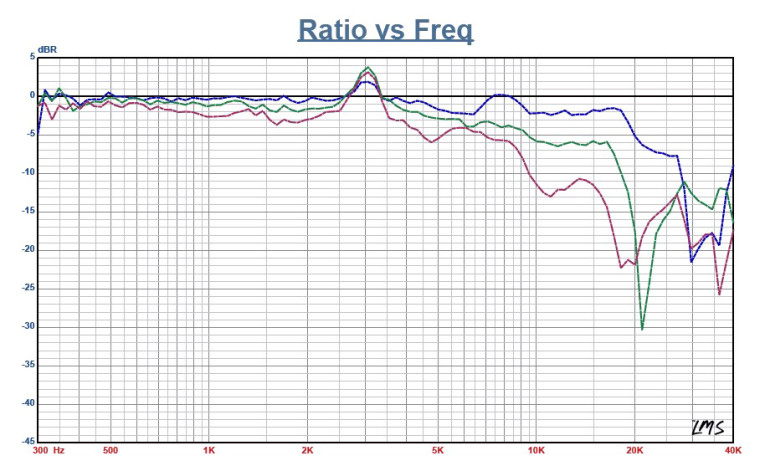
I recess mounted each of the tweeters in a small enclosure that had a baffle area of about 10” × 6” and measured the on- and off-axis frequency response at 2.83 V/1 m. Figure 2 and Figure 3 depict the on-axis response of the D3004/604000 and the D3004/604010, respectively. The D3004/604000’s response is about ±3.15 dB from 3 kHz to 24 kHz, out to 40 kHz. The frequency response for the D3004/604010 is ±4 dB from 3 kHz to 26 kHz, also with response out to 40 kHz.
Figure 4 shows the D3004/604000’s on- and off-axis from 0° to 45°. Figure 5 shows the D3004/604010’s on and off-axis from 0° to 45°, with the normalized response curves shown in Figure 6 and Figure 7, respectively.
Both curves sets show typical directivity for a 1” dome high-frequency device. For an additional depiction of the directivity of these to beryllium dome tweeters, the polar plot for the D3004/604000 is shown in Figure 8. The polar plot for the D3004/604010 is shown in Figure 9.
In terms of production consistency, Figure 10 shows the two-sample SPL comparison for the D3004/604000. Figure 11 shows the two-sample SPL comparison for the D3004/604010. Both curve sets indicate that the two samples sets were well matched with some minor variation in the 10-to-20-kHz region for the D3004/604000.

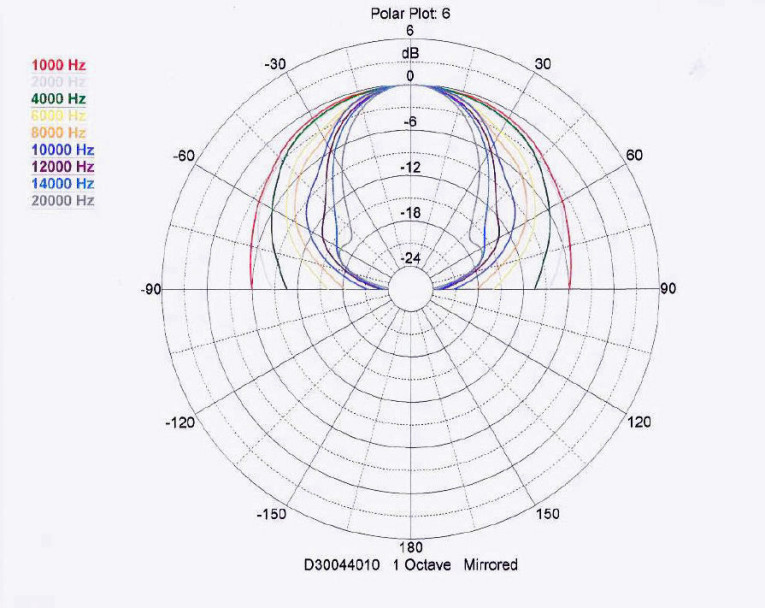
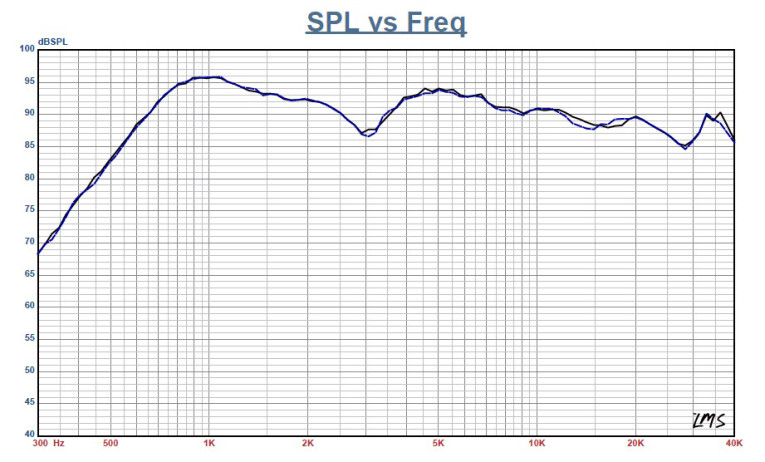
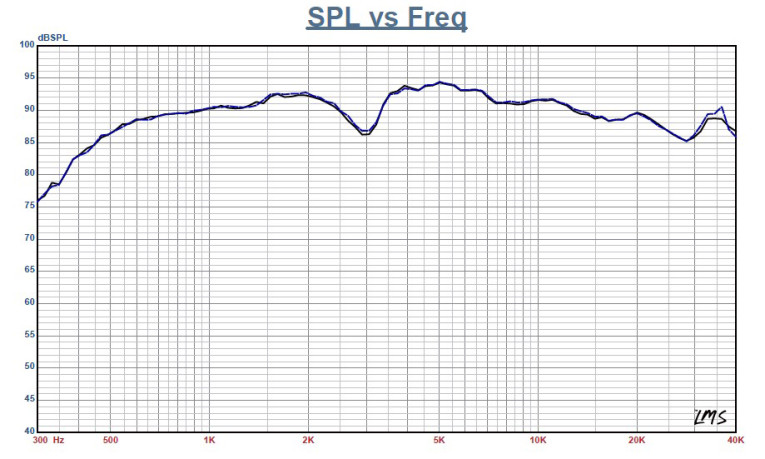
Next, I measured the impulse response with both tweeters recess mounted. Importing this data in the Listen SoundMap software produced the D3004/604000’s cumulative spectral decay (CSD) plot shown in Figure 12 and the D3004/604010’s CSD plot shown in Figure 13. Figure 14 and Figure 15 show the Short Time Fourier Transform (STFT) displayed as a surface plot for D3004/604000 and D3004/604010, respectively.
Last, I set the 1 m SPL to 94 dB (3.84 V for the D3004/604000 and 4.07 V for the D3004/604010) and the sweep range to 1 to 20 kHz and measured the second and third-harmonic distortion at 10 cm. Figure 16 shows the results for the D3004/604000. Figure 17 shows the results for the D3004/604010. I provided these measurements to see the relationship between second and third-harmonic distortion. However, correlation to subjective preference based on total harmonic distortion (THD) is not well established.
I have designed high-end products using Scan-Speak’s beryllium domes (the D3004/664000), and it is one of the most musical tweeter timbres I have encountered. For speakers that require a smaller tweeter footprint, these new beryllium tweeters should be an attractive solution.
For more information, visit www.scan-speak.dk. VC
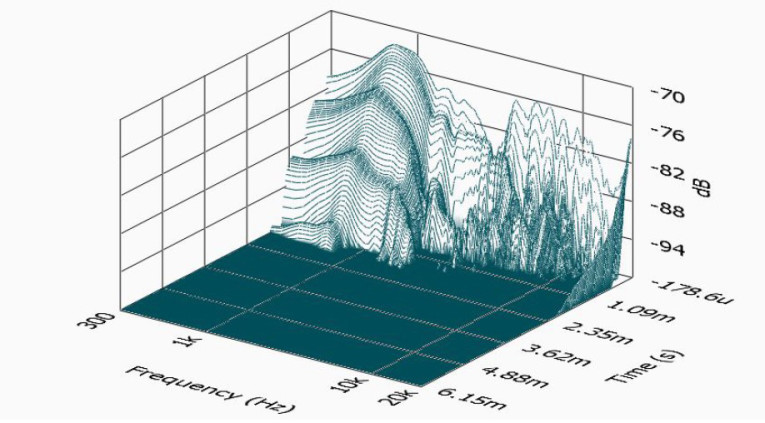
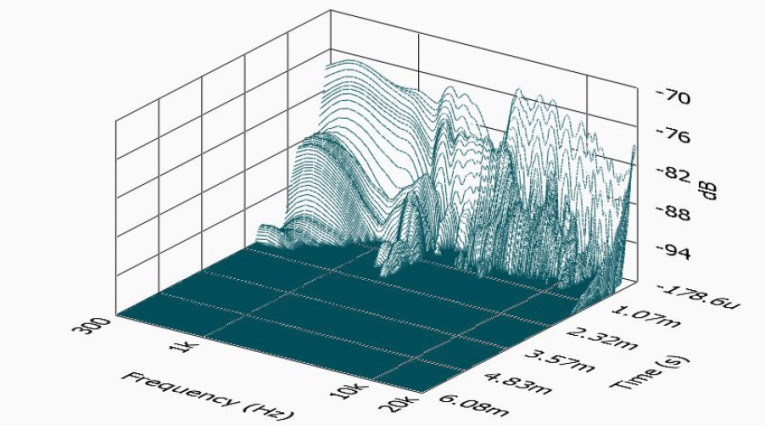
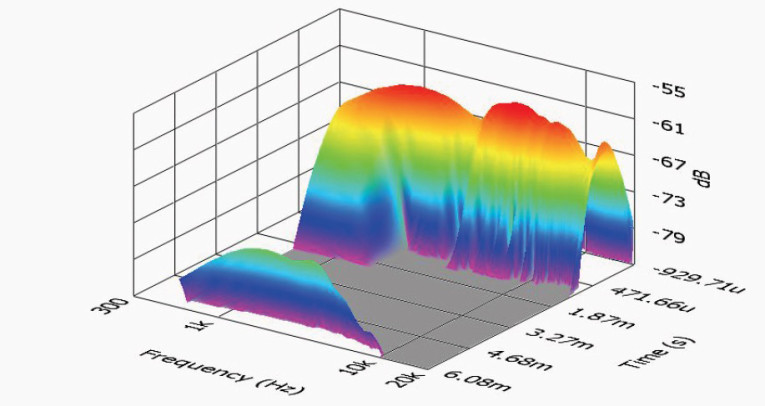
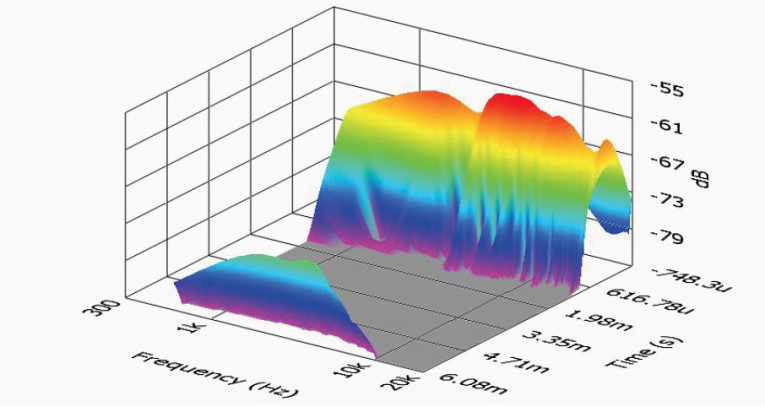
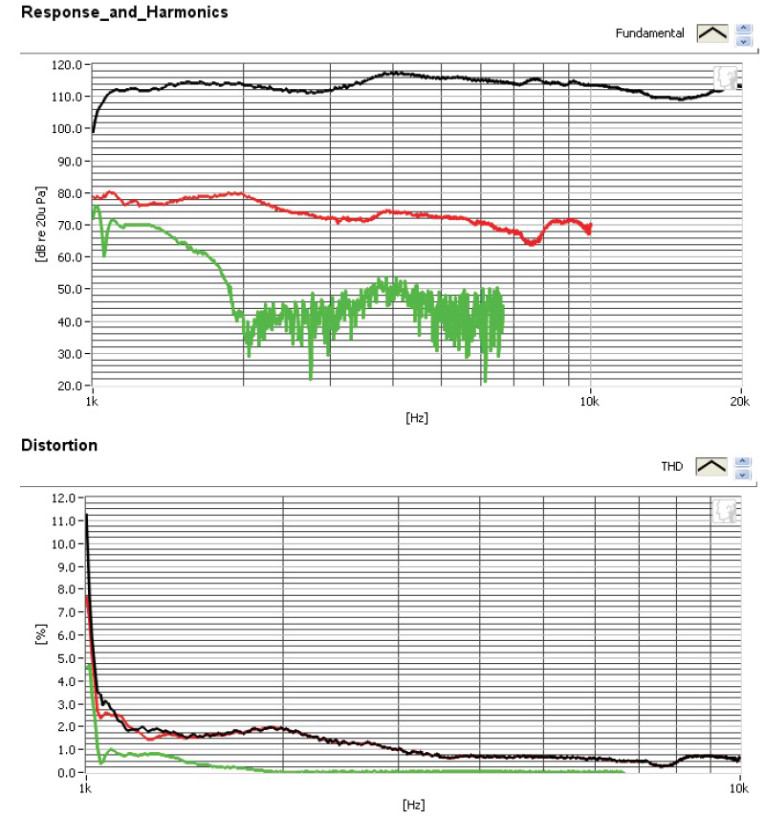
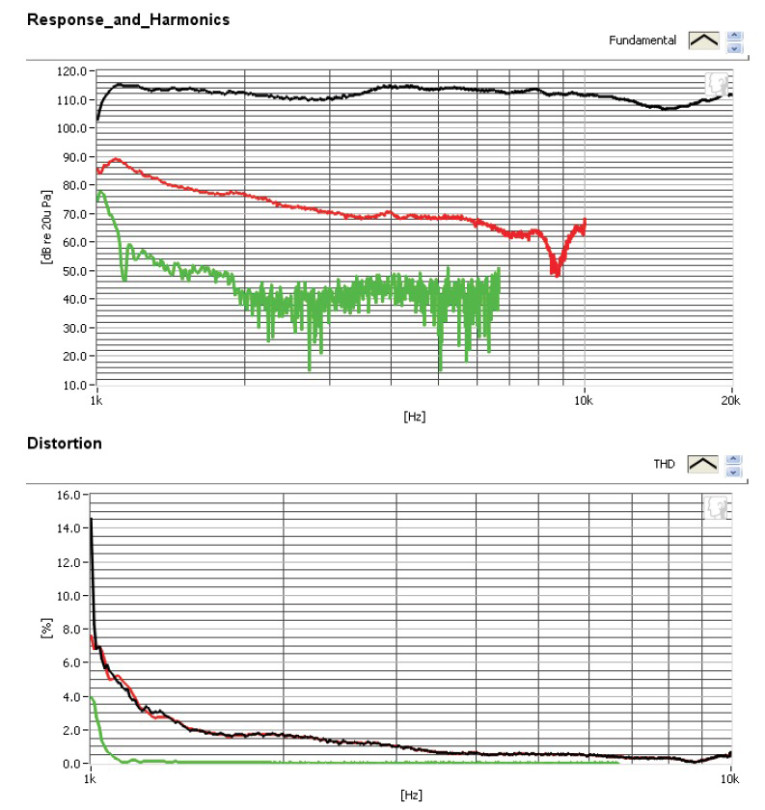
This article was originally published in Voice Coil, May 2016.






